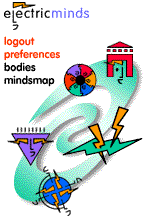
|

|
You've heard the predictions: eventually, every appliance in your house will be web-connected for your convenient control. Hewlett-Packard (HP) is taking the first small steps along those lines in the office environment with its WebJet 200A software, which will reside in an adapter connected to the office printer. The adapter is, in effect, a miniature web server that gives the printer its own URL. Each printer can have its own web page, allowing users to control functions (not configuration) with a browser. Judy DeMocker, in an Infoworld article, says that HP employees have christened the technology HEHAW: "Hey, Everybody Has A Web page." Excuse me I need to switch over to my browser for a minute and turn on my TV and VCR at home to record a movie. Things are heating up in the field of computer telephony integration. Microsoft has recently enhanced its telephony application programming interface (TAPI), and several companies are now developing systems based on the Java telephony API JTAPI. Currently, systems available from several companies, including CallWare Technologies Inc. and Active Voice Corp., function with office-suite software such as Novell's Groupwise, Microsoft's Exchange, and Lotus/IBM's Notes. But CallWare plans a fourth-quarter 1997 release of a JTAPI program that will link telephony functions into Java-enabled browsers and web-based call centers. Lucent Technologies plans to offer a development kit that lets users build JTAPI applications for Lucent's PassageWay software, which can link to any telephone system. Sun Microsystems will offer its own development kit, JavaTel, to allow users to embed telephony functions such as call control and routing into web applications and network computers. Communications Week, 17 March 1997 and 28 February 1997. Programmers at Georgia Tech are developing a virtual environment based on gorillas and their habitat. The system uses a head-mounted display, a joystick, and fairly complex behavioral simulations to allow the user to navigate a three-dimensional gorilla habitat as an adolescent gorilla. A user who violates the dominant male's territory will receive a warning cough similar to that of a real gorilla. Further advances may elicit an all-out charge by the offended party, complete with appropriate roars and screams. The simulation contains several dozen gorillas, each one of five possible types: dominant male, adult male, adult female, juvenile, or infant. The programmers worked with the Zoo Atlanta staff to refine the sixteen behaviors exhibited by the animals. Zoo personnel also provided flow charts showing which behaviors elicit which responses, complete with percentage figures on how frequently the responses occur; this means the behavior patterns don't appear in a lockstep, predictable way. The visual displays are impressive if you're a computer expert who is aware of the current state of the art, and disappointing if you've just finished watching "King Kong." The simulated gorillas have no facial expressions or other niceties (like fur), but the developers are definitely pushing the envelope on several fronts. It's a challenge to model an outdoor environment accurately: lots of complex surfaces/textures and no walls or rooms to define and constrain spaces. Not to mention modeling the behavior patterns of primates in a 3D environment. By the end of the year, the developers and zoo officials hope to offer the environment as an attraction at Zoo Atlanta. Discover, April 1997, page 26. One Step Back = Two Steps Forward By the end of 1997, Sun Microsystems' Microelectronics division intends to market a $99 plug-in card with a Java-based microprocessor to turn old PCs into network computers. The Java chip will provide fast hardware-based Java interpretation and will work on ISA- or PCI-bus personal computers. Interesting strategy. What other possibilities are out there in an industry where early obsolescence is increasingly a problem for return on investment? Infoworld, 24 February, page 1. Viewpoint Datalabs has five thousand wire-frame 3D digital models for sale. Viewpoint is targeting its marketing efforts at movie studios and high-end web producers. Each model costs several hundred dollars; purchasers create surface textures, lighting, animation, and rendering appropriate to their particular application. Viewpoint is developing relationships with Microsoft, Netscape, Apple, and Silicon Graphics to supply models for incorporation in those companies' products. Vewpoint also does custom work. Piracy is a problem. Viewpoint is carefully tracking developments in copyright protection measures, such as digital watermarking. Viewpoint's business model raises some interesting possibilities for the creative process as content increasingly goes digital. New Media Communications will be shipping new modem cards to CellularVision Technology & Telecommunications (CT&T) this summer. The modems, in conjunction with a 6"-by-6" antenna, will download data on a 28-gigahertz microwave channel at 54 megabits per second faster than a personal computer's bus structure can handle the data. But, hey: now you've got room to grow. CT&T has already tested the necessary local multipoint distribution service (LMDS) technology; they're planning a commercial rollout in New York before the end of the year. The service will become available to various locales as CT&T builds the necessary transmission facilities. Business Week, 24 February 1997, page 127.
|
needtoknow said: Some companies are experimenting with combining changing price lists with corporate email showing customer/prospect requests. They could also be combined with projects up for bid from publications like Commerce Business Daily (for government projects) and onsale.com and other Web-based transactional services. Most Active Topics: Topic 1 Conference Business Topic 3 Conference Introductions Topic 23 Pliny Fisk's Resource Tracking DB | |||||
| ||||||
Also in Tech Scan: Learning and Cognition Chemistry Lab on a Microchip DNA Arrays | ||||||



